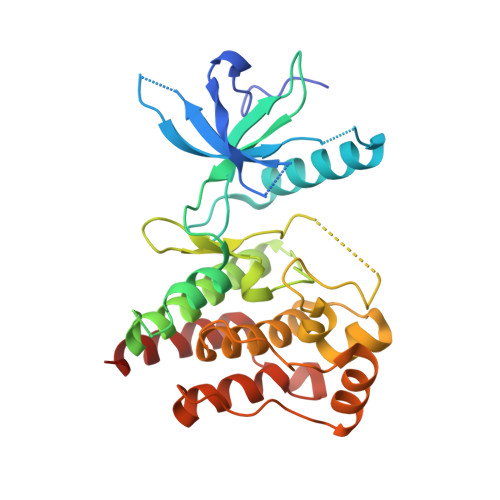FGFR1 Kinase Inhibitors: Close Regioisomers Adopt Divergent Binding Modes and Display Distinct Biophysical Signatures.
Klein, T., Tucker, J., Holdgate, G.A., Norman, R.A., Breeze, A.L.(2014) ACS Med Chem Lett 5: 166-171
- PubMed: 24900792
- DOI: https://doi.org/10.1021/ml4004205
- Primary Citation of Related Structures:
4NK9, 4NKA, 4NKS - PubMed Abstract:
The binding of a ligand to its target protein is often accompanied by conformational changes of both the protein and the ligand. This is of particular interest, since structural rearrangements of the macromolecular target and the ligand influence the free energy change upon complex formation. In this study, we use X-ray crystallography, isothermal titration calorimetry, and surface-plasmon resonance biosensor analysis to investigate the binding of pyrazolylaminopyrimidine inhibitors to FGFR1 tyrosine kinase, an important anticancer target. Our results highlight that structurally close analogs of this inhibitor series interact with FGFR1 with different binding modes, which are a consequence of conformational changes in both the protein and the ligand as well as the bound water network. Together with the collected kinetic and thermodynamic data, we use the protein-ligand crystal structure information to rationalize the observed inhibitory potencies on a molecular level.
Organizational Affiliation:
Discovery Sciences, AstraZeneca R&D , Alderley Park, Macclesfield, Cheshire, SK10 4TG, U.K.















